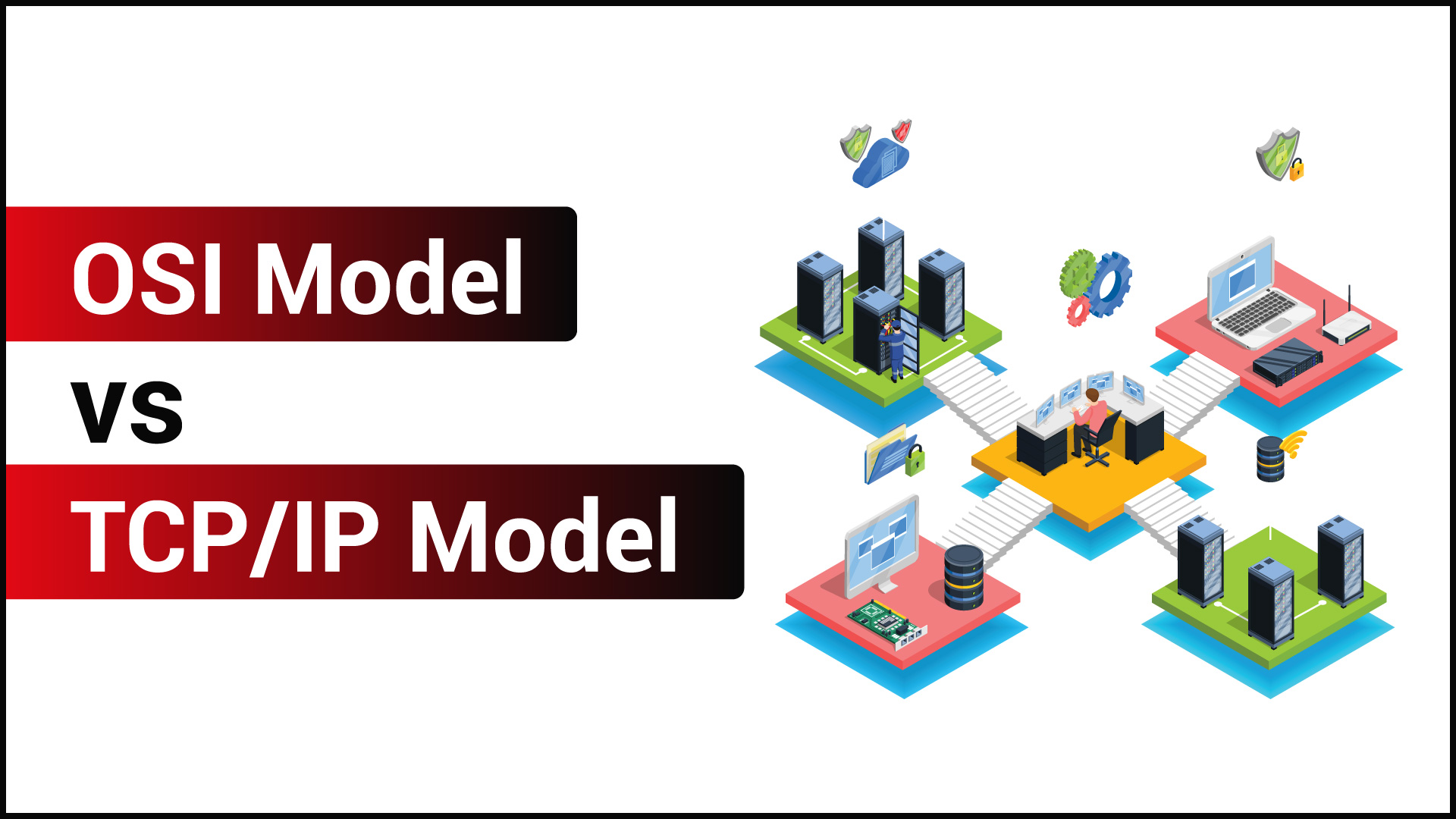OSI Model vs. TCP/IP Model
Ever wondered how your messages, photos, and videos travel from one software to another across the internet? It’s like a well-organized postal system but for data. Two key models help make sense of this process: the OSI Model and the TCP/IP Model. Let’s dive into what these models are and how they compare in a way that’s easy to understand.

What is the OSI Model?
Think of the Open Systems Interconnection (OSI) Model as a detailed blueprint for how data moves across a network. Imagine sending a letter: you write it, put it in an envelope, address it, and then mail it. The OSI Model breaks down the data journey into seven distinct steps or layers:
- Application Layer: This is where you interact with your applications, like browsing the web or sending an email.
- Presentation Layer: It translates data into a format that applications can understand—like translating your letter into a language the recipient speaks.
- Session Layer: This layer manages connections between different applications, ensuring your online conversations don’t drop.
- Transport Layer: Think of this as the delivery service that ensures your data arrives intact and in the right order.
- Network Layer: Here’s where your data gets its directions. This layer figures out the best route to send your data from one place to another.
- Data Link Layer: This layer ensures that data arrives at the right place within a local network. It’s like sorting mail at a local post office.
- Physical Layer: This is the actual hardware-like cables and switches. It’s the “roads” that your data travels on.
What is the TCP/IP Model?
The Transmission Control Protocol/Internet Protocol, or TCP/IP Model, is like the simpler cousin of the OSI Model. Developed in the 1970s. It’s a suite of rules and procedures that has two main protocols: TCP and IP. The TCP/IP is nonproprietary and is compatible with all types of Operating Systems.
It’s a bit more streamlined with just four layers:
- Application Layer: This combines the OSI’s Application, Presentation, and Session Layers. It handles everything from web browsing to email and file transfers.
- Transport Layer: Similar to the OSI Model, it ensures data is delivered correctly. It uses protocols like TCP for reliable delivery and UDP for faster, less reliable transfer.
- Internet Layer: Think of this as the “routing” layer, ensuring data packets are sent to the right place across various networks.
- Network Interface Layer: This combines the OSI’s Physical and Data Link Layers. It’s about the hardware and how data gets onto the network.
Comparing the Two Models
Here’s a simple table to compare the OSI and TCP/IP Models:
| Feature | OSI Model | TCP/IP Model |
| Creator | International Organization for Standardization (ISO) in 1970’s | Developed by the Department of Defense in 1984 |
| Layers | 7 Layers: Application, Presentation, Session, Transport, Network, Data Link, Physical | 4 Layers: Application, Transport, Internet, Network Interface |
| Layer Functions | Each layer has a unique role | Fewer layers with combined functions |
| Protocols | General concepts | Specific protocols like TCP, IP, UDP |
| Use | Mostly theoretical and educational | Practical, used in real-world networking |
Why Does This Matter?
Understanding both models can make a huge difference, whether you are diving into networking or just curious about how the internet works. The OSI Model gives you a detailed breakdown, which makes learning and troubleshooting very easy. It’s like having a detailed map of data’s journey.
The TCP/IP Model, being streamlined and efficient, is what actually keeps the internet running. It makes data’s movement easier to understand. It’s like a simplified, practical map that shows how everything connects in action.
In Summary
So next time, think about these models when you are browsing through the internet or dealing with network issues. They are the reason your data gets where it needs to go smoothly and accurately. Understanding their importance not only makes you more tech-savvy but also helps you appreciate the magic behind the scenes.
Network+ with InfosecTrain
InfosecTrain’s Network + Certification Training can help you get a deeper understanding of fundamental principles, advanced techniques, and ethical considerations of Open Systems Interconnection. In this course, InfosecTrain offers real-world challenges with hands-on experience and practical insights, enhancing your professional credibility.







 1800-843-7890 (India)
1800-843-7890 (India)